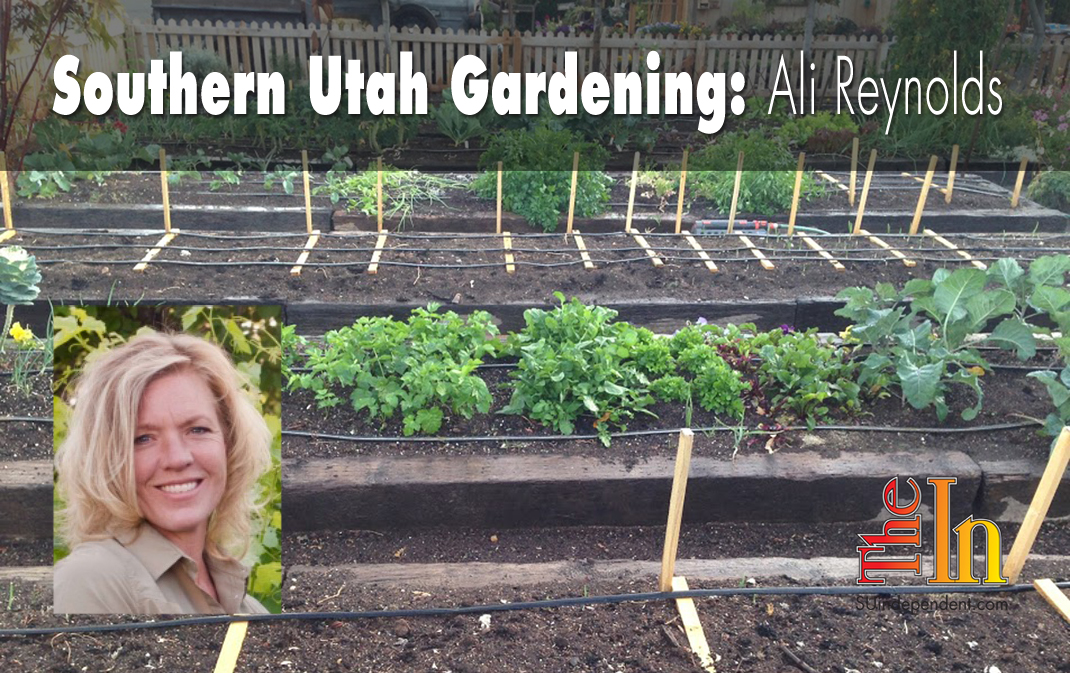 Southern Utah Gardening: Planning an organic vegetable garden
Southern Utah Gardening: Planning an organic vegetable garden
Naturally, being an organic gardener, my first article will have an organic approach. But even if you are still not into the whole organic gardening thing, I’m sure you’ll find these gardening tips of use.
The term “organic gardening” has come to mean the systematic use of techniques that mirror naturally occurring systems. Put simply, it is about finding environmentally friendly ways to cultivate the land, working with rather than against nature. Organic gardening refers not just to a system of techniques but also to a whole philosophy of life.
Pick your plot
Sun is important! Your garden plot will need a minimum of eight hours of pure sunshine for the best vegetable growing, more if you want extra-large onions! Take your time and watch how much sun your chosen spot has. Watch how your home, walls, or trees may shade that area. An ideal garden spot for southern Utah would be shaded in the hot afternoon from 5 p.m. on, or even in the middle of the day.
Protection from the wind is also an important consideration. Winds can be be destructive to your vegetable gardens. Decide how you want to grow your vegetables. In the ground with rows, wide rows, raised beds, or maybe even containers gardens. Draw your design and ideas out on grid paper. If you’re new to gardening, start small. You can always make your garden plot bigger next year. Many gardeners start off with huge gardens and get overwhelmed once summer comes: It gets hot and weeds move in. There is nothing wrong with starting a 3-foot by 6-foot bed to begin with. Quality, not quantity.
Orientation
A simple but effective way to improve your chances of success is to arrange rows or beds so that they get the maximum sun exposure. If possible, rows or beds should run north-south so that as the sun makes its daily rounds it shines over the tops of the rows from east to west. My beds run east-west, and the north-facing side seems to be a little shy on sun when tall crops are on the south side of the garden. Hindsight.
Planning what to grow
Get online and gather some seed catalogs or peruse the seed selections at your local nursery, and make a list of what you want to grow. Grow what you love to eat. You’re more likely to take care of it if you love it! But don’t forget to try something new, because you might find a new favorite. There’s nothing like homegrown! In southern Utah, we have a long growing season and can start crops as soon as January. Many hometown nurseries have planting time charts available to help you learn the planting times for our area.
Soil
Soil is another consideration to take in. Well-drained, rich, loamy soil is important for a garden. However, finding this in southern Utah is, well, probably close to impossible. But improvements can certainly be made by building raised beds and/or amending the dirt with compost, hopefully creating soil over time.
Digging the soil over-loosens any compaction and allows you to remove any large stones below the surface. Now is the time to work in organic matter. Lots of organic matter! One thing you will hear me say over and over is “compost, compost, compost!” The first and foremost important thing you can do to your garden, if nothing else, is to add compost. You can make your own compost or buy bagged compost. I personally work 4 to 6 inches of compost into my beds every spring. If your soil is compacted with heavy clay, you can add perlite to help loosen the soil for better drainage and provide needed oxygen to the plants’ roots. Peat moss is great for quickly draining sandy soils to help hold moisture and nutrients in. Never work your soil when it is wet. You will only create a compacted mess.
Nourishing the soil
In order for plants to grow and sustain their life process, they require water and air as well as a range of elements. Plants also need nutrients for successful growth and development. Adding a well balanced organic fertilizer — such as an all purpose 4-6-2 that contains nitrogen, phosphorus, and potassium as well as minerals — will ensure that your crops are off to a healthy start. Work fertilizer into the top 2 inches of your prepared garden soil prior to planting.
Seeds or transplants
Deciding whether you want to start your vegetables from seeds or transplants may depend on your experience. Transplants are a bit easier for the novice, but some things like carrots should only be planted from seeds. You certainly have more choices when it comes to seeds. Read your seed packets for instructions, ask questions, and maybe even take some classes to learn more if needed.
Watering
Generally, all seedlings and young plants need regular watering to encourage healthy root growth. But for more mature plants, it’s best to assess their individual needs. Vegetables grown for their leaves tend to require a lot of water throughout growth whereas fruiting vegetables such as tomatoes and beans need water most when plants have set flowers and when fruits begin to swell. Watering is never a one-size-fits-all answer.
Weed control
Weeds compete with crops for light, moisture, and nutrients. Need I say more? Don’t make your vegetable plants work harder than they need to. Weed your garden! We will talk about weed control in later articles. I won’t leave you hangin’.
Articles related to “Southern Utah Gardening: Planning an organic vegetable garden”
Southern Utah Gardening: January is the month for planting peas in southern Utah
Southern Utah Gardening: Time to plant radishes in your southern Utah spring garden
Southern Utah Gardening: The time has come to fertilize your lawn and garden



